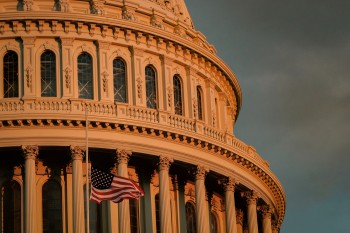The House of Representatives on November 5 passed the Infrastructure Investment and Jobs Act, a landmark bill that provides $65 billion in funding for broadband – including $42.5 billion for the Broadband Equity, Access, and Deployment (BEAD) Program that will create a broadband deployment state grant program administered by the National Telecommunications and Information Administration (NTIA). The bill, which has already been approved by the Senate, will be signed into law by President Biden on November 15.
NTCA and its members worked tirelessly the past several months to ensure these historic investments will meet consumer and community needs now and into the future. Multiple NTCA priorities are included in the bill: a priority for scalable networks that meet evolving consumer needs, funds directed to unserved areas first, a challenge process to avoid overbuilding existing networks, a vetting system to ensure applicants can provide the services promised, program/agency coordination, and the ability to align funds across programs. NTCA also worked to ensure that the statutory text for the BEAD program puts cooperative and commercial companies on equal footing.
As NTIA begins the process of implementing the BEAD and other programs, NTCA and our members will continue to advocate at federal and state levels for future-proof networks operated by both commercial and cooperative providers with a proven track record of service. NTCA also continues to think of ways to support our statewide association colleagues, who will be active in influencing state actions.
Here is a summary of the Infrastructure Investment and Jobs Act’s broadband provisions:
Grants for Broadband Deployment:
-
-
-
- NTIA broadband grants ($42.45 billion) to states that then subgrant to providers by awarding funding first to unserved areas (80% without 25/3), then underserved areas (80% without 100/20)
- Providers must deploy at least 100/20 Mbps capable broadband networks within four years
- Each state will receive at least $100 million
- States may award funds for broadband deployment, data collection, broadband mapping, broadband adoption, and other purposes
- NTIA and states are provided the flexibility to prioritize scalable networks that can meet evolving connectivity needs of consumers. Other priorities include:
-
- Persistent poverty in the area
- Broadband speed
- Expediency of deployment
- Demonstrated compliance with Federal labor & employment laws
-
- NTIA will not grant money to states until the new FCC maps are complete
- State proposals must align the use of grants fund with funds available from other programs and coordinate with other broadband programs
- The program includes a vetting system to ensure providers have the financial and managerial capacity and technical and operational capability to provide the services promised
- States must oversee a challenge process before awarding money to ensure broadband availability data is accurate
- Grant recipients must offer at least one “low-cost broadband service option”
-
- Grants ($2.75 billion) to states for furthering broadband adoption and digital literacy
- Grants ($1 billion) for middle mile network deployment
- $14.2 billion for the Affordable Connectivity Program set at $30/month (tribal $75/month)
- FCC directed to adopt consumer protection rules, consumer broadband labels, and digital discrimination rules
- $2 billion appropriated for RUS telecom programs
- $2 billion appropriated for NTIA Tribal Broadband Connectivity Program
-


